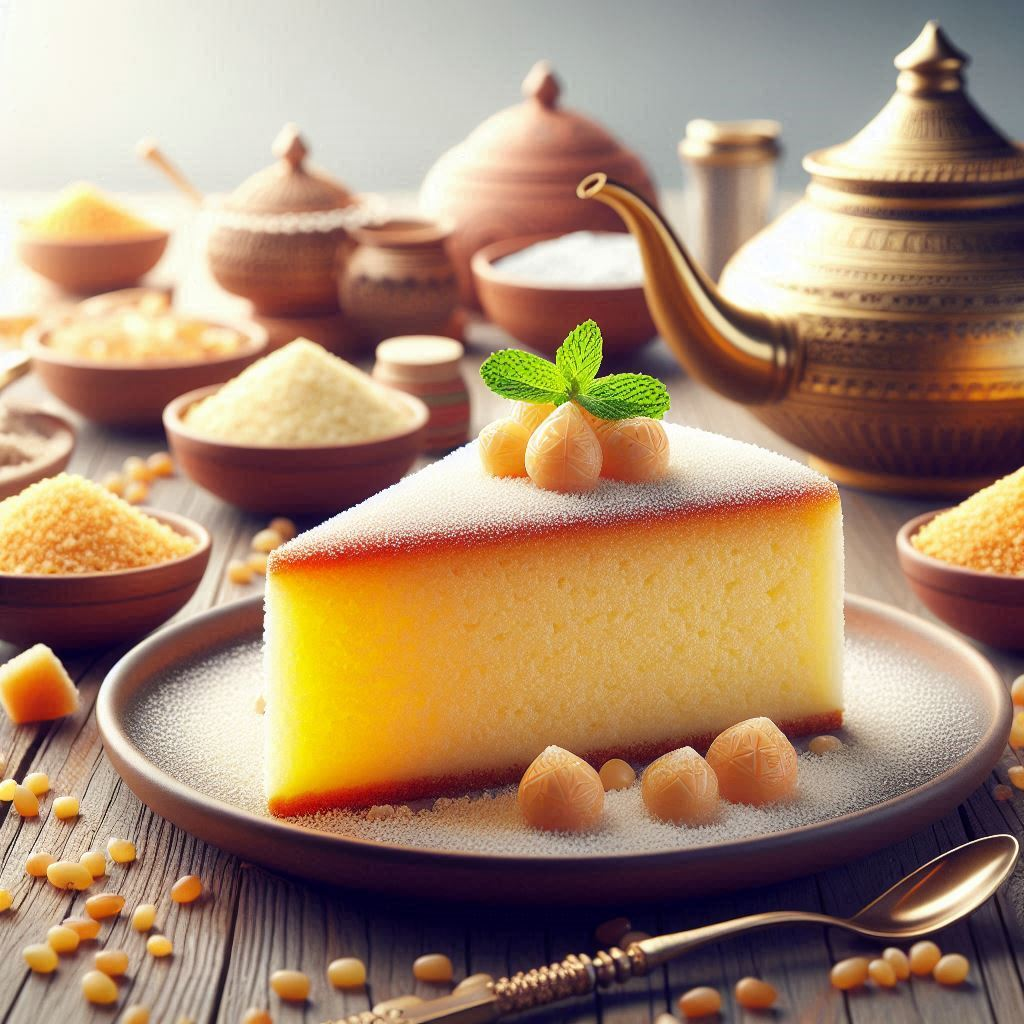
A Journey Through Time: Unraveling the History and Sweetness of Semolina Cake (Basbousa)
The world of desserts is a tapestry woven with threads of history, culture, and tradition. One such thread, rich and golden like the dessert itself, is the story of Semolina Cake, also known as Basbousa. This beloved treat, with its crumbly texture and sweet, nutty flavor, has captivated taste buds across continents for centuries, its origins shrouded in a fascinating blend of culinary influences.
A Tale of Two Continents:
While the exact birthplace of Semolina Cake remains a subject of debate, its roots are firmly planted in the fertile ground of the Middle East and North Africa. Some culinary historians trace its lineage back to ancient Egypt, where a similar dessert called “basbusa” was enjoyed. This early version, likely made with ground almonds and honey, was a staple in the Egyptian diet, reflecting the region’s abundance of these ingredients.
As trade routes flourished, the recipe for this delightful cake traveled alongside spices and goods, eventually finding its way to the Arabian Peninsula, where it was embraced and refined. The addition of semolina, a staple grain in the region, gave birth to the “Basbousa” we know today. This adaptation, with its distinct crumbly texture, became a cherished dessert in Arab cuisine, often served during special occasions and celebrations.
Beyond Borders:
The journey of Basbousa didn’t end there. It crossed borders and oceans, finding its way to Greece, where it was christened “revani”. This version, often infused with citrus and rosewater, reflects the unique culinary influences of the Greek islands.
Further afield, the cake’s journey took it to the Balkans, where it became known as “revani” or “ravanija”. In these regions, the recipe was further adapted, incorporating walnuts and syrup, creating a dessert that resonated with local tastes.
A Symphony of Flavors:
The beauty of Basbousa lies in its simplicity and adaptability. While the basic recipe remains consistent, variations abound, reflecting the culinary creativity of different cultures.
The Classic Recipe:
At its core, Basbousa is a simple yet satisfying cake. A blend of semolina, sugar, butter, eggs, and baking powder forms the base, creating a light and crumbly texture. This base is then baked until golden brown, its aroma filling the kitchen with a promise of sweetness.
The Sweet Embrace:
Once baked, the cake is generously drenched in a syrup made from sugar, water, and citrus juice, creating a symphony of flavors. The syrup permeates the cake, adding a touch of sweetness and moisture, transforming it into a truly decadent treat.
A Culinary Canvas:
Beyond the classic recipe, Basbousa offers a canvas for culinary creativity. Here are some popular variations:
- Citrus Burst: The addition of lemon zest or orange blossom water adds a bright and refreshing citrus note to the cake.
- Nutty Delight: Ground almonds, walnuts, or pistachios can be incorporated into the batter, adding a rich and nutty dimension to the flavor.
- Spice Infusion: A touch of cardamom, cinnamon, or nutmeg can be added to the syrup or batter, adding a warm and aromatic dimension to the cake.
- Dairy Delights: Some variations include cream cheese or yogurt in the batter, adding a creamy richness to the texture.
A Culinary Legacy:
Semolina Cake, or Basbousa, stands as a testament to the power of culinary exchange and adaptation. From its humble origins in the Middle East to its global presence, this dessert has woven its way into the hearts and kitchens of countless cultures. Its simple ingredients, combined with the infinite possibilities for variation, make it a timeless treat, ensuring its place on dessert tables for generations to come.



